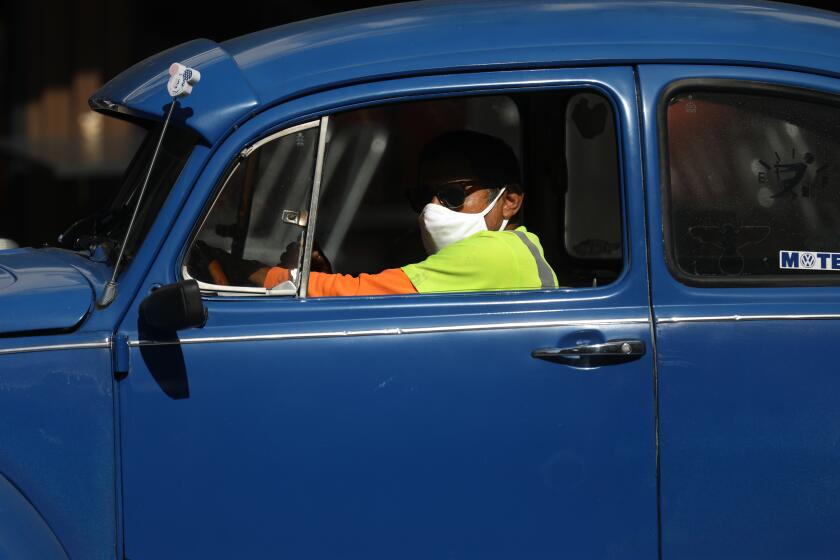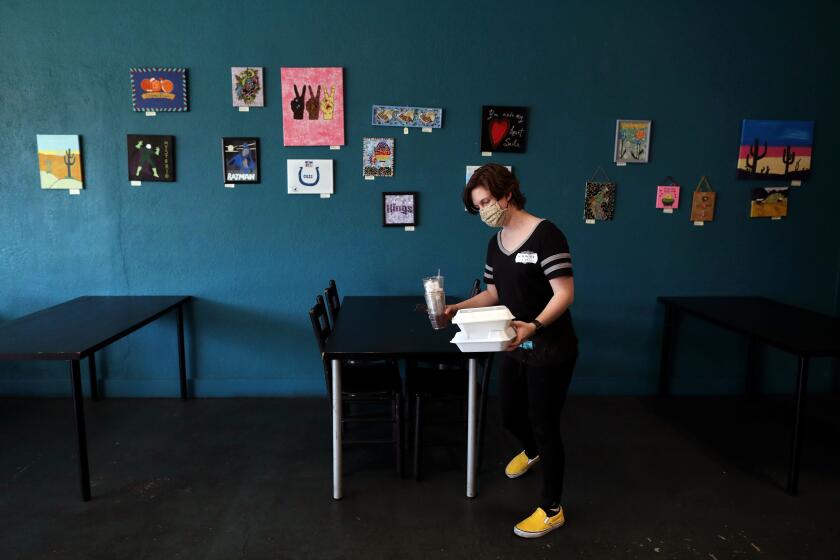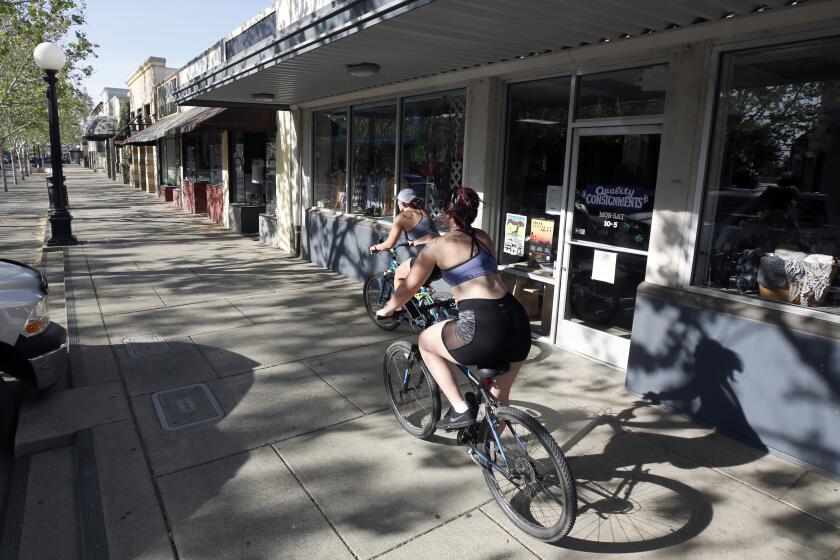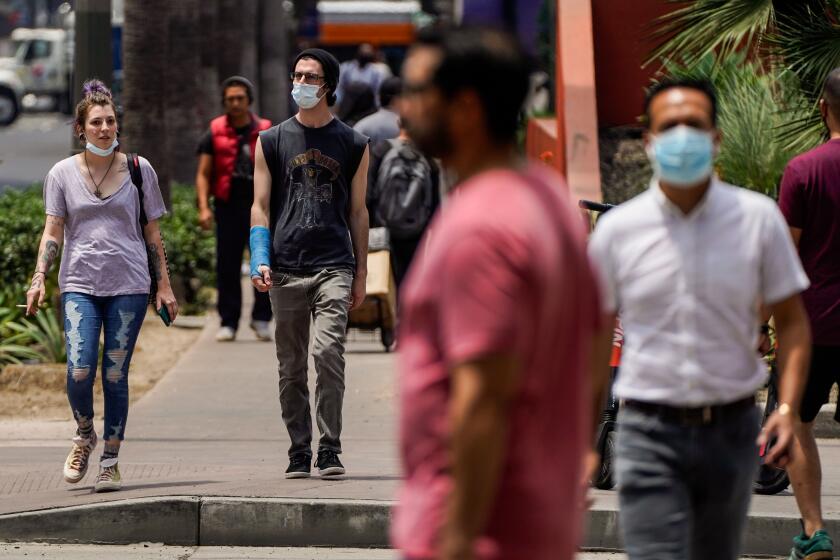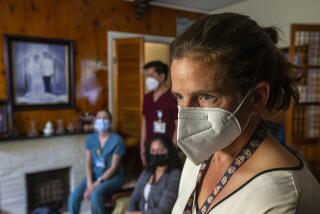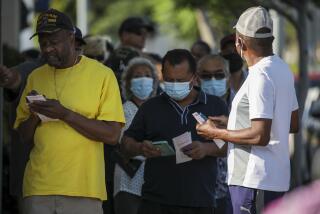Half of California counties now on state watchlist as coronavirus infections surge
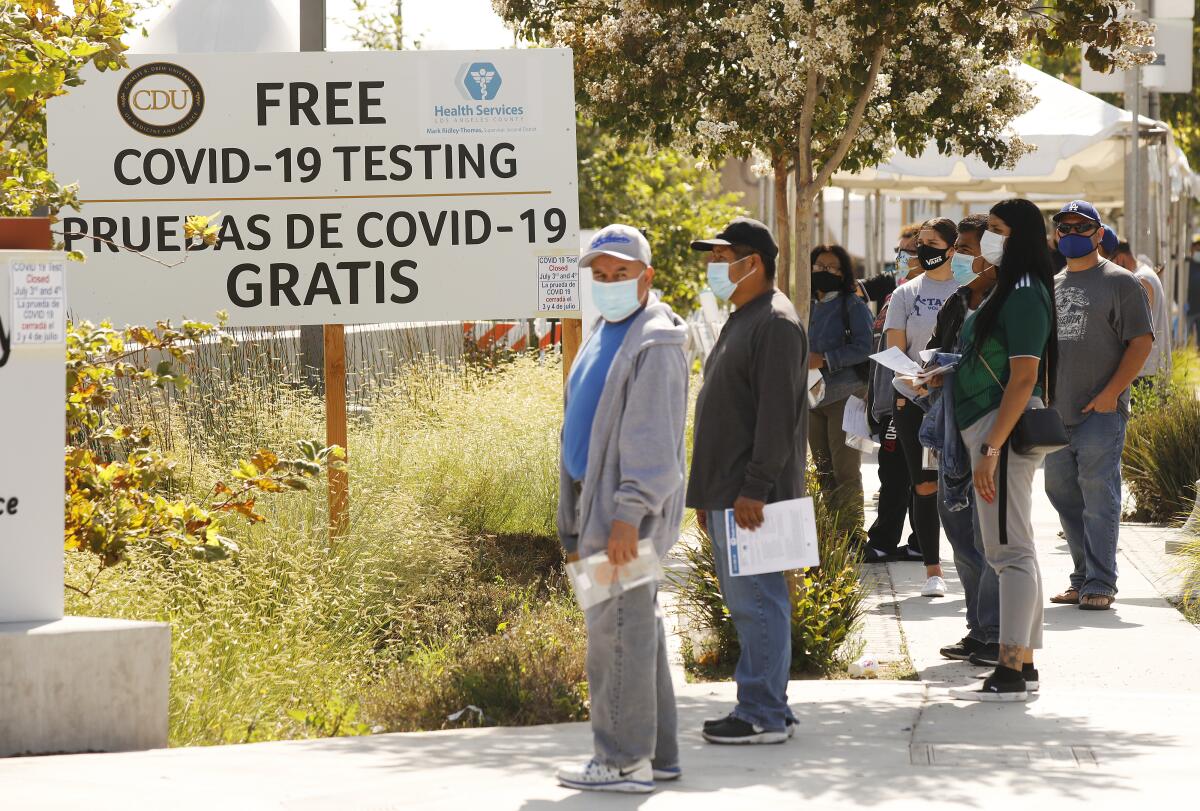
- Share via
Half of California’s 58 counties are now on the state’s coronavirus watchlist as the number of infections, hospitalizations and deaths continue to approach unprecedented levels.
The state reported 7,798 new cases of COVID-19 on Friday. On Thursday, California set a one-day record with 9,816 newly confirmed COVID-19 cases and 137 related deaths — the second-highest total on a single day since the pandemic began, officials said.
Statewide, there have been more than 304,000 confirmed coronavirus infections and nearly 6,900 deaths.
Los Angeles County added 2,667 new cases on Friday alone, pushing its cumulative count above 127,000.
An additional 51 fatalities were reported by the county’s health department. Its total death toll is now just above 3,700.
But the surge of new cases in California on Thursday was fueled, in part, by Stanislaus County, which made a change to its reporting systems that resulted in the addition of nearly 1,400 cases that had not been previously tallied.
Even without those cases, though, California still would have seen one of its highest single-day counts to date.
Officials are hoping public behavior changed toward the end of June and early July, but they won’t know how that plays out for several more weeks.
In all, the state is now monitoring 29 counties that are seeing elevated disease transmission and/or increasing hospitalizations — up from 26 earlier in the week.
Among the latest additions is Placer County, which “is experiencing increased hospitalizations and limited hospital capacity,” according to the state.
Factors driving the spread of COVID-19 there, state officials said, “include large households where staying away from others while ill is difficult, community and extended family gatherings, and indoor work environments where physical distancing is difficult.”
If a county is on the monitoring list for at least three consecutive days, the state will require it to close bars and indoor dining in restaurants, as well as other indoor business operations, for at least three weeks.
Twenty California counties have re-opened, but according to a Times analysis, testing to date remains low in many rural parts of the state. One challenge: Some residents don’t want it.
The state’s watchlist also now includes Yuba and Sutter counties, which grabbed headlines in May when they began allowing some businesses to reopen in defiance of the statewide stay-at-home order.
In a video statement Wednesday, Yuba-Sutter Health Officer Dr. Phuong Luu said that although the region was “doing well just two months ago,” conditions have worsened because “unfortunately the community became too lax, too complacent.”
“We were overly confident that we crushed COVID-19. We never crushed it,” she said. “We only flattened the curve. But the curve never went fully away and now is roaring back with exponential growth in terms of new cases every day.”
The state has identified workplace transmission and “household clusters relating to friend and family gatherings” as factors contributing to the spread of the disease in those counties. However, officials said “40% are unknown due to cases not able or not willing to provide source of exposure.”
“It’s always going to be this dance — two steps forward, one step back — if we see worsening of the situation so that our fragile healthcare system is not decimated and doesn’t go into crisis,” Luu said. “And this dance will continue until we have a vaccine.”
Some coronavirus-related regulations were relaxed in California’s Yuba and Sutter counties, letting some businesses reopen starting Monday.
The full watchlist now includes counties from nearly every part of California: Colusa, Contra Costa, Fresno, Glenn, Imperial, Kern, Kings, Los Angeles, Madera, Marin, Merced, Monterey, Napa, Orange, Placer, Riverside, Sacramento, San Benito, San Bernardino, San Diego, San Joaquin, Santa Barbara, Solano, Stanislaus, Sutter, Tulare, Ventura, Yolo and Yuba.
Gov. Gavin Newsom said Thursday that the state will continue to “do more to monitor and work providing technical assistance” for all the counties on the watchlist “to make sure that their needs are met.”
“Tulare County, Imperial County, L.A. County [and] Kings County continue to be areas of disproportionate focus for our team as it relates to the current trajectory of the virus in those communities and current capacity to meet the needs in those counties,” he said.
‘Making sure we don’t have to go farther and close more businesses requires an individual commitment of each and every one of us,’ Mayor Garcetti says.
Amid troubling increases in infections and hospitalizations in the region, Los Angeles Mayor Eric Garcetti warned several times this week that residents could again be ordered to stay home. During a news conference Friday, he reminded Angelenos that socializing and gathering with people outside their households is still not allowed.
“We’re not back to a safer-at-home order, but we all need to do our part to minimize the spread of COVID-19,” he said.
Twenty thousand people were tested at city and county testing sites on Friday, Garcetti said. To meet surging demand, city testing capacity will increase by 25% next week. More than 1 million people have been tested by the city and county, he said.
Since Memorial Day, hospitalizations of coronavirus patients have more than doubled in Orange, Riverside and Ventura counties, and more than tripled in San Bernardino County. In the same period, hospitalizations have risen by 35% in L.A. County and 28% in San Diego County.
L.A. County Public Health Director Barbara Ferrer said Thursday that “nothing can be off the table in the pandemic” but that she personally hopes “we don’t have to go back there. I hope that we figure out a way to take care of each other, to be sensible about what we’re doing.”
Times staff writers Ben Welsh, Hannah Fry, Leila Miller, and Rong-Gong Lin II contributed to this report.
More to Read
Sign up for Essential California
The most important California stories and recommendations in your inbox every morning.
You may occasionally receive promotional content from the Los Angeles Times.
